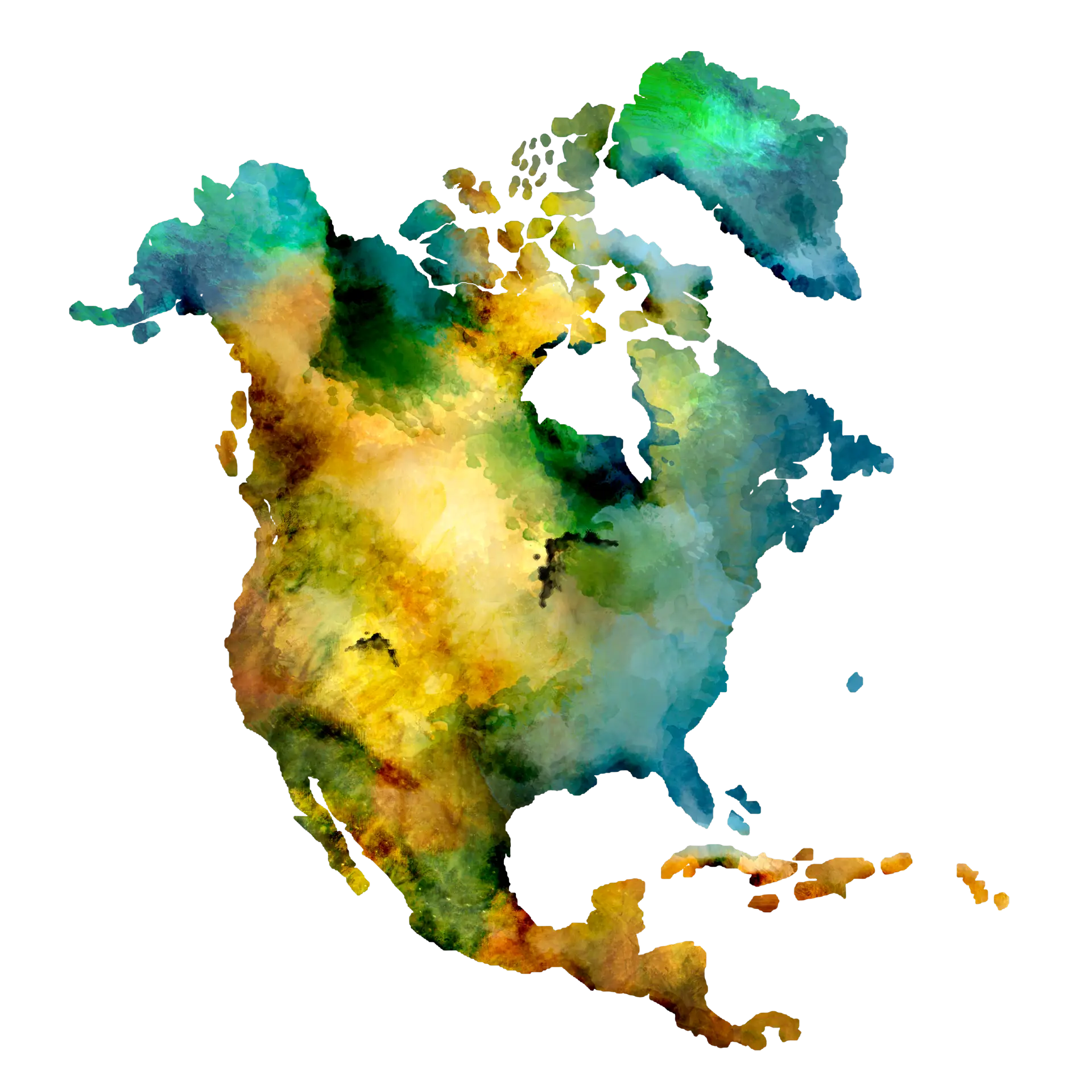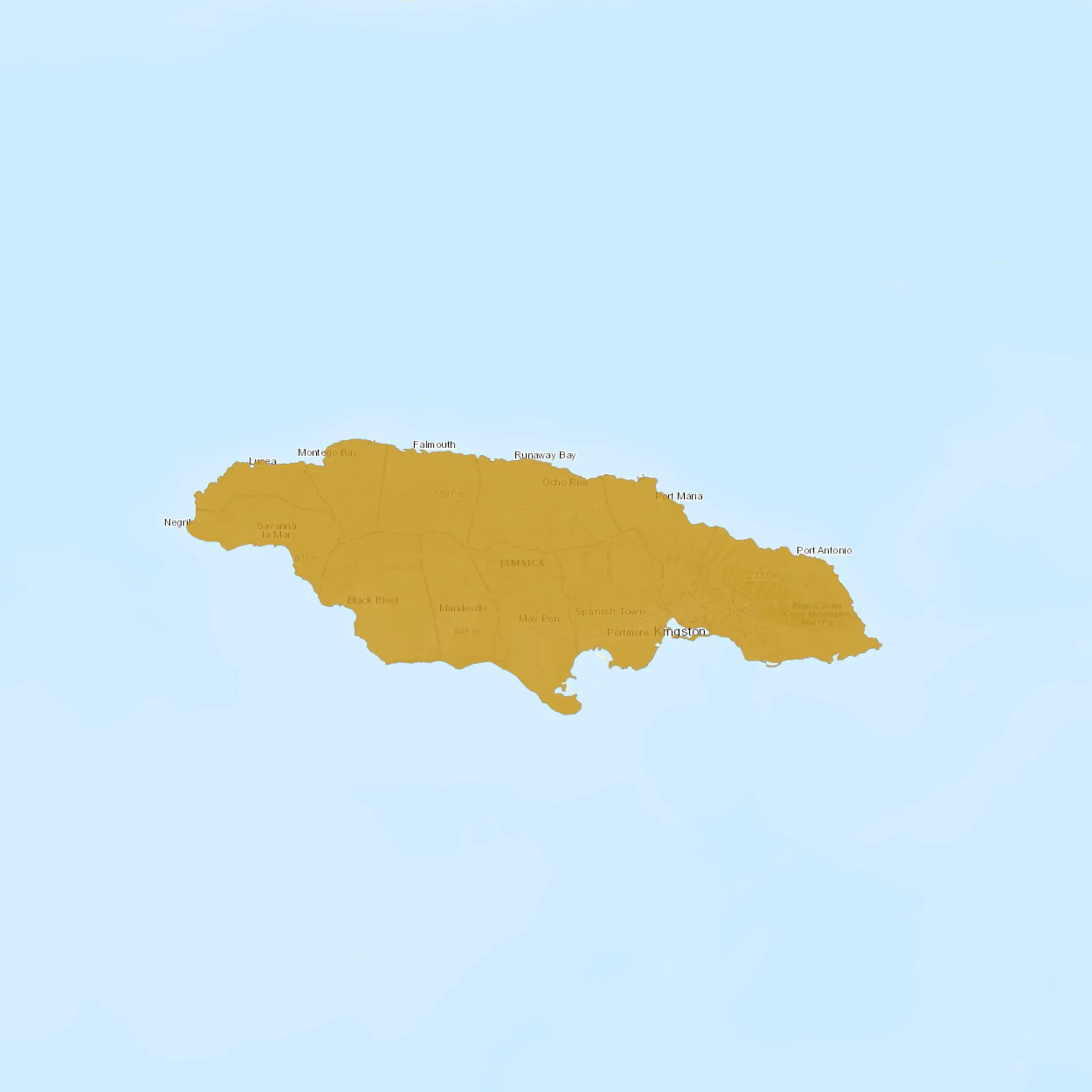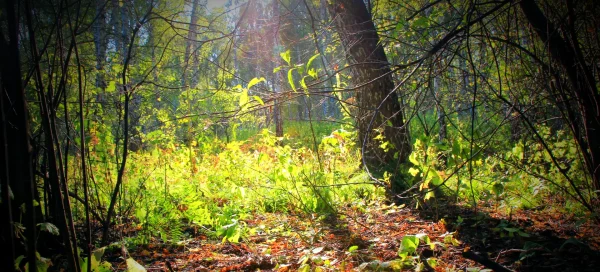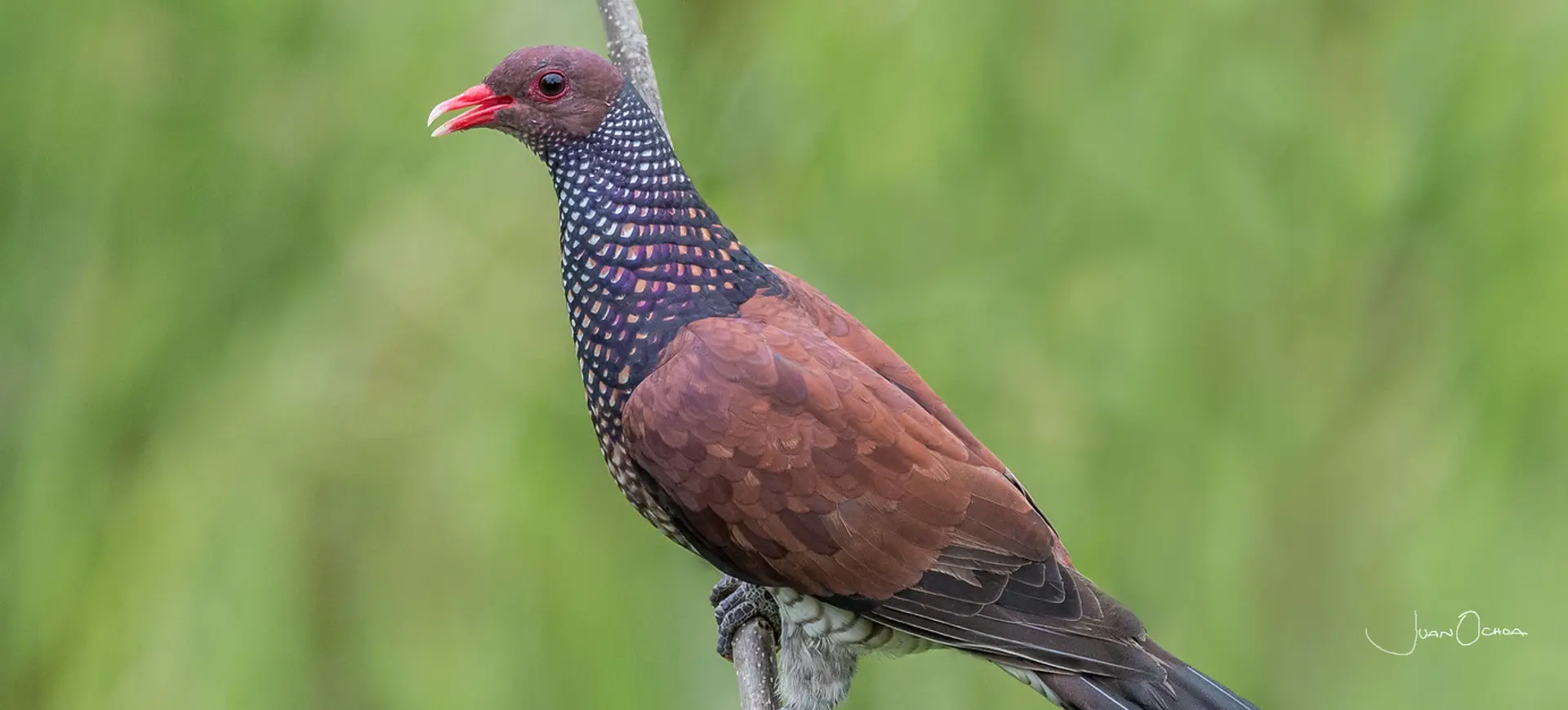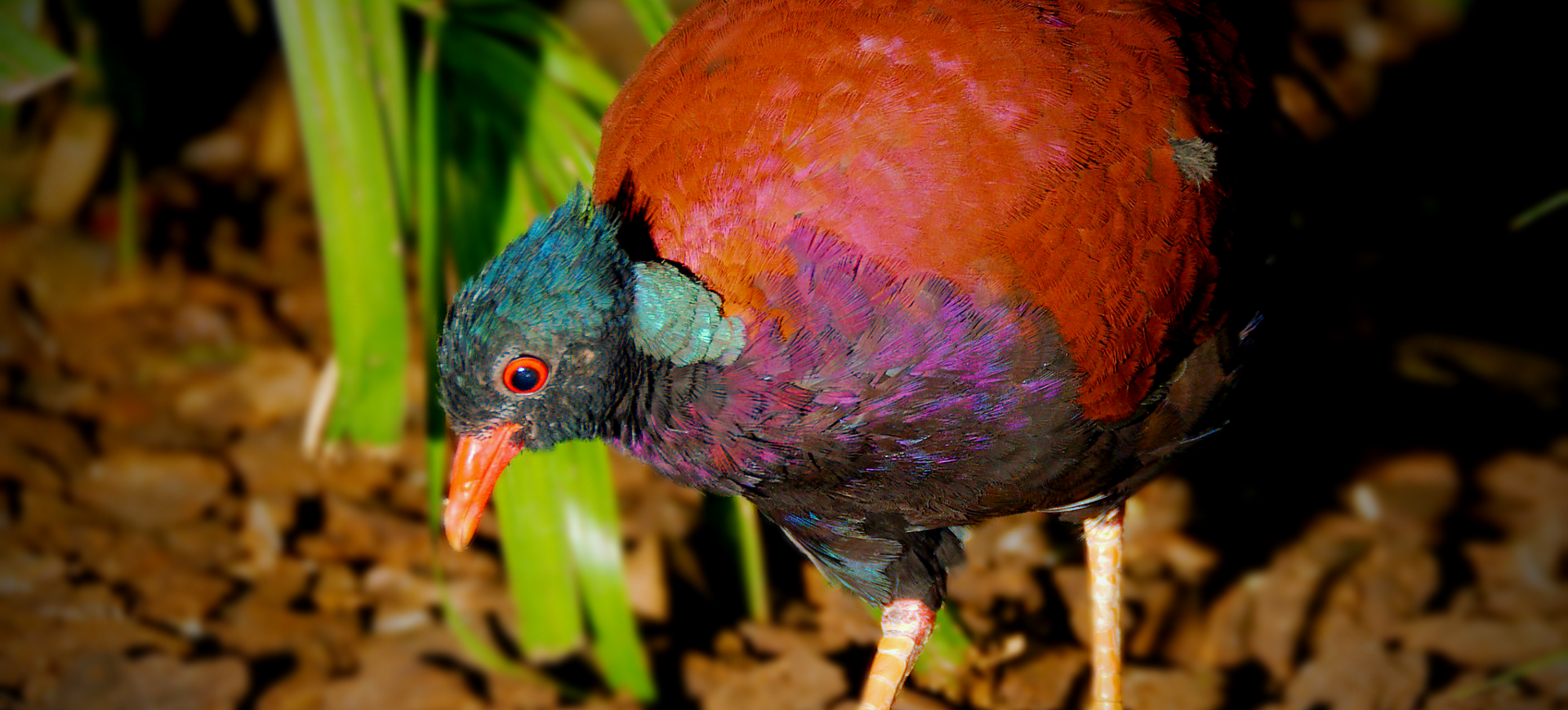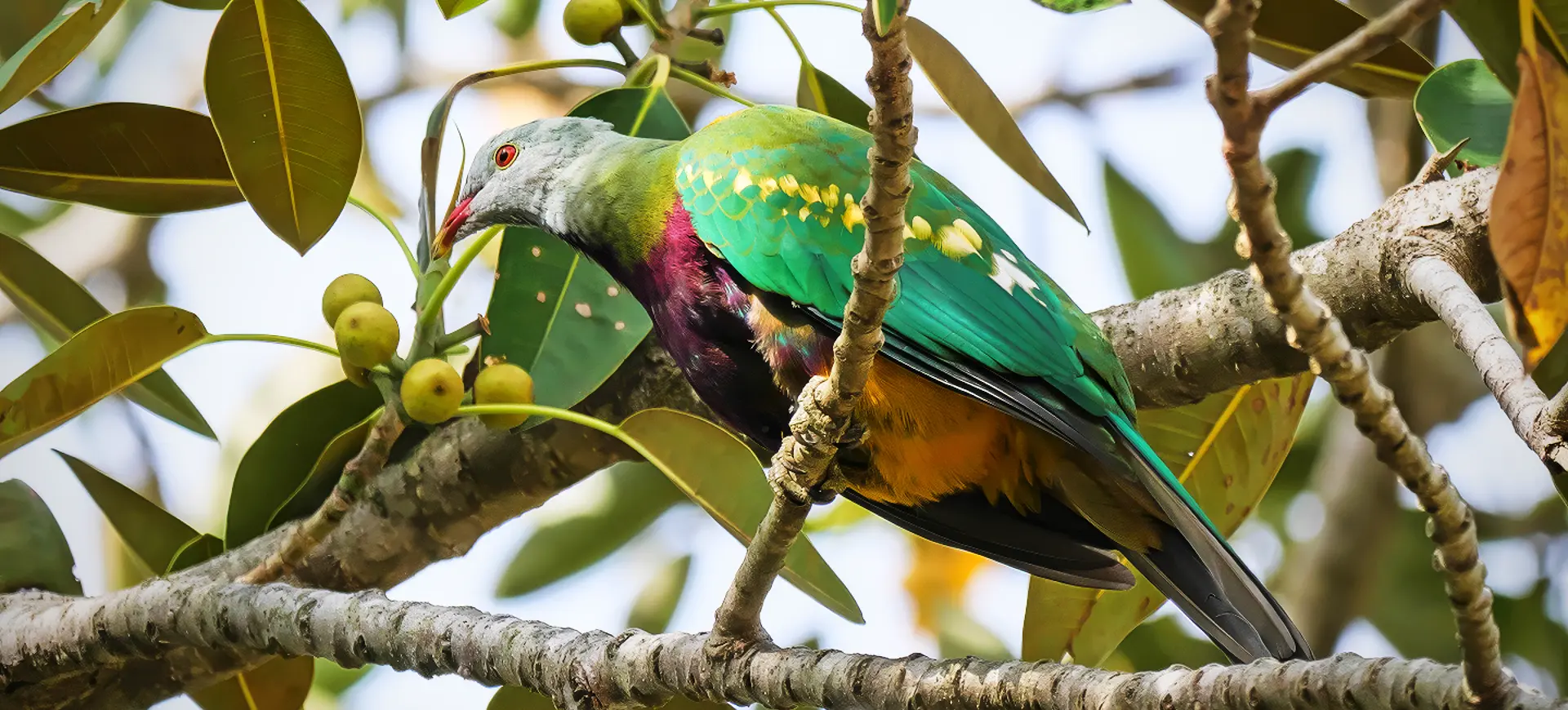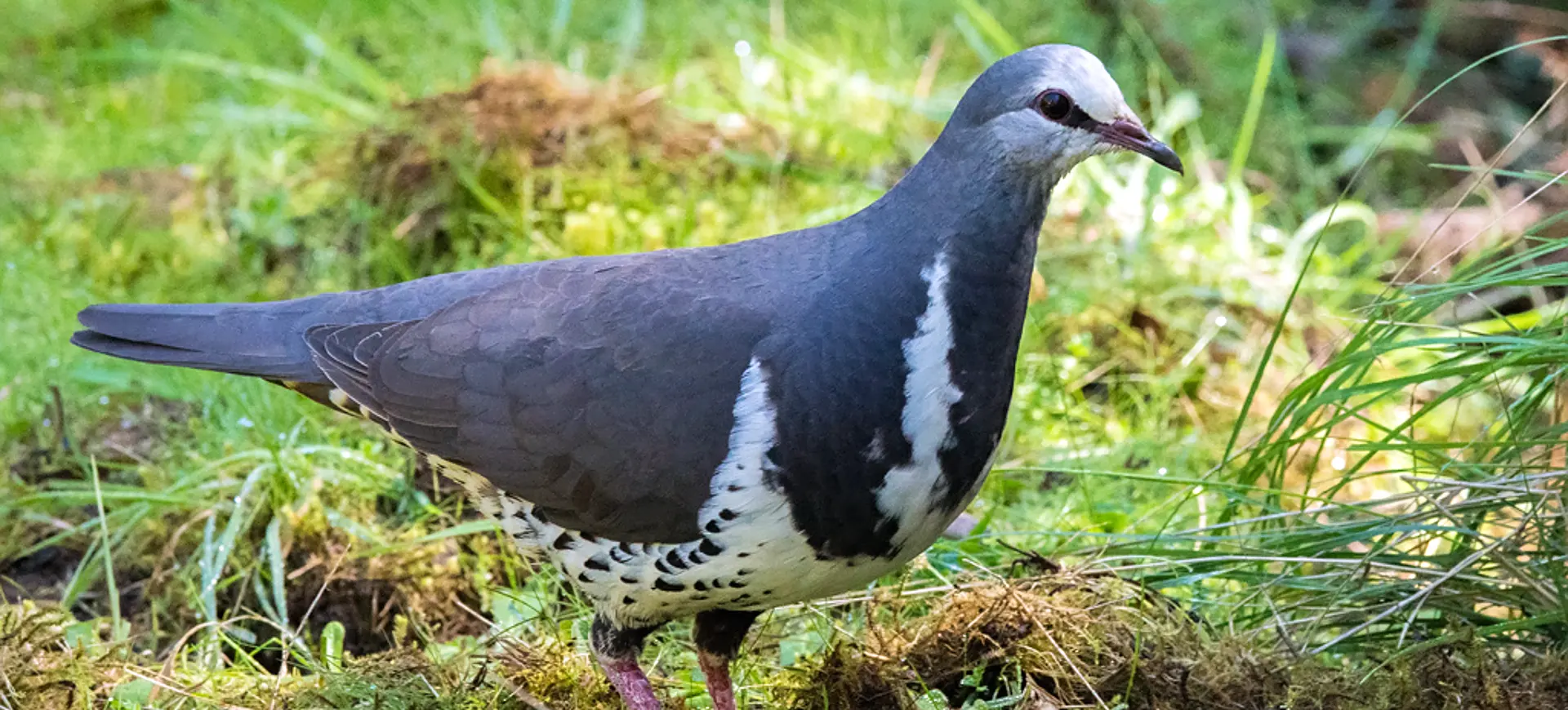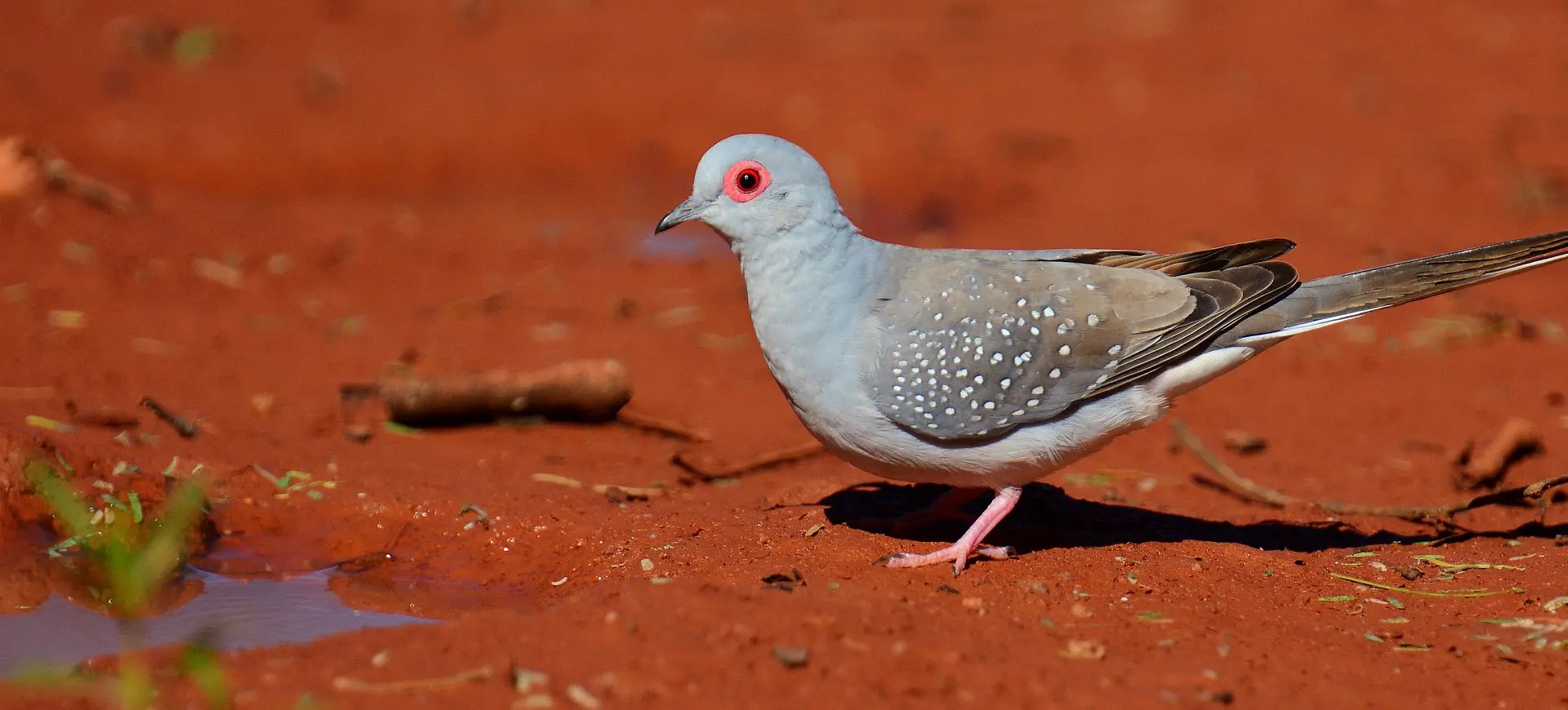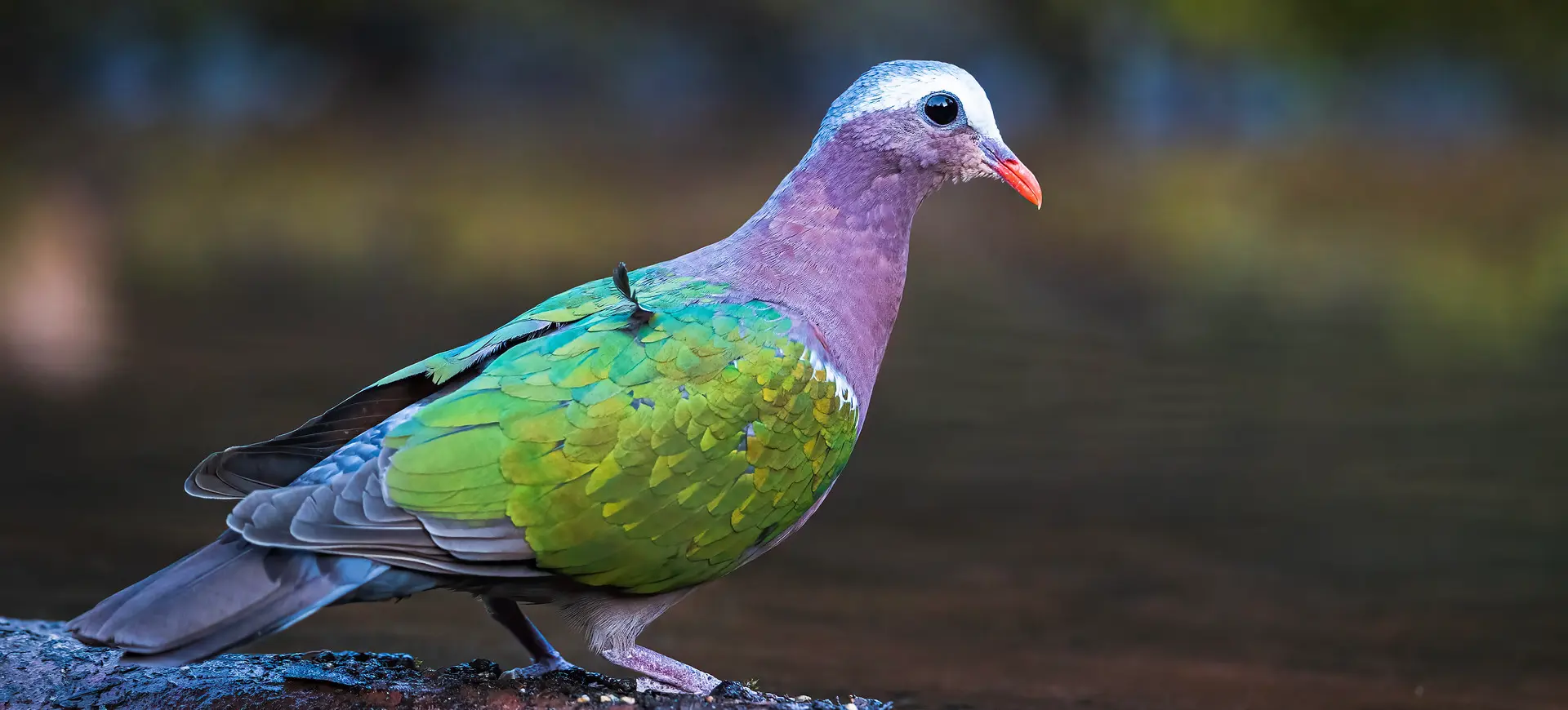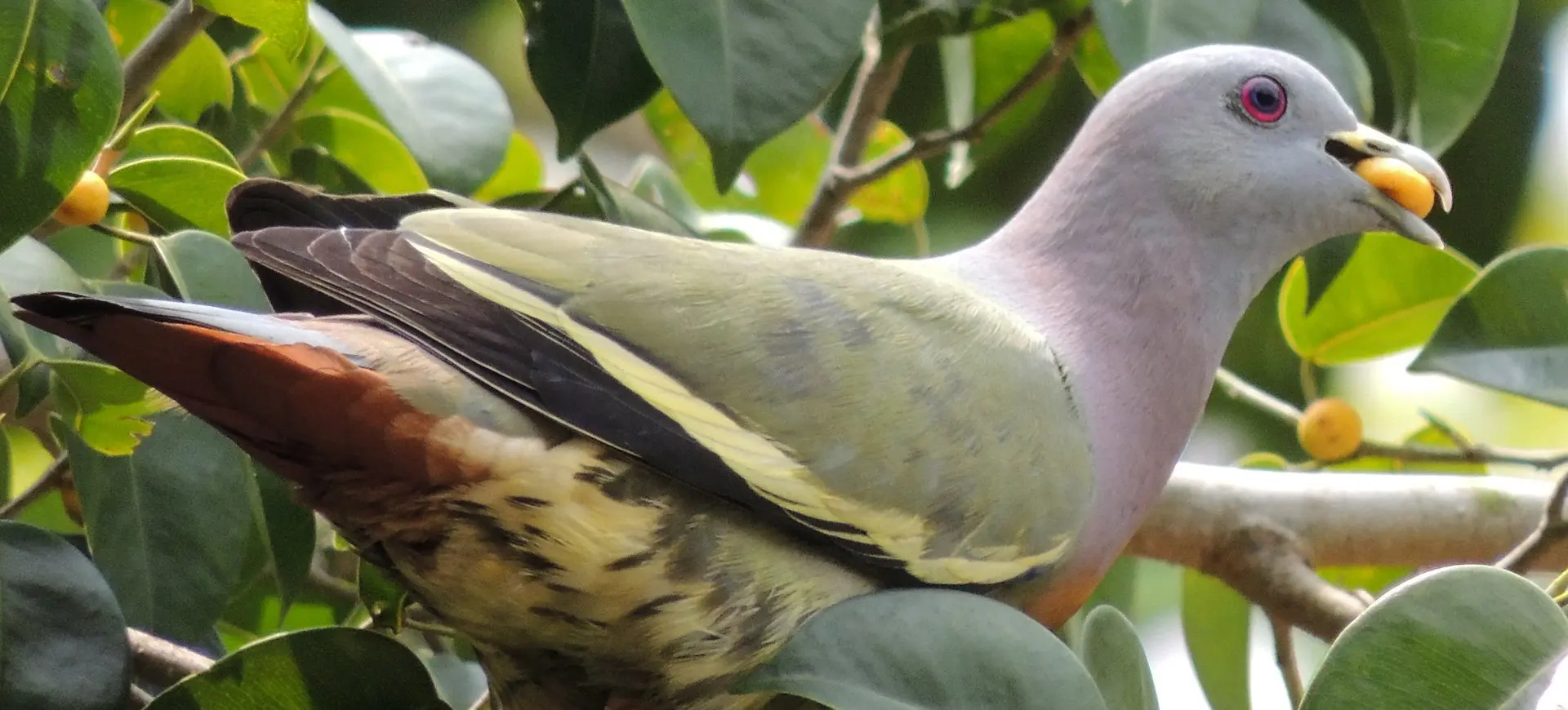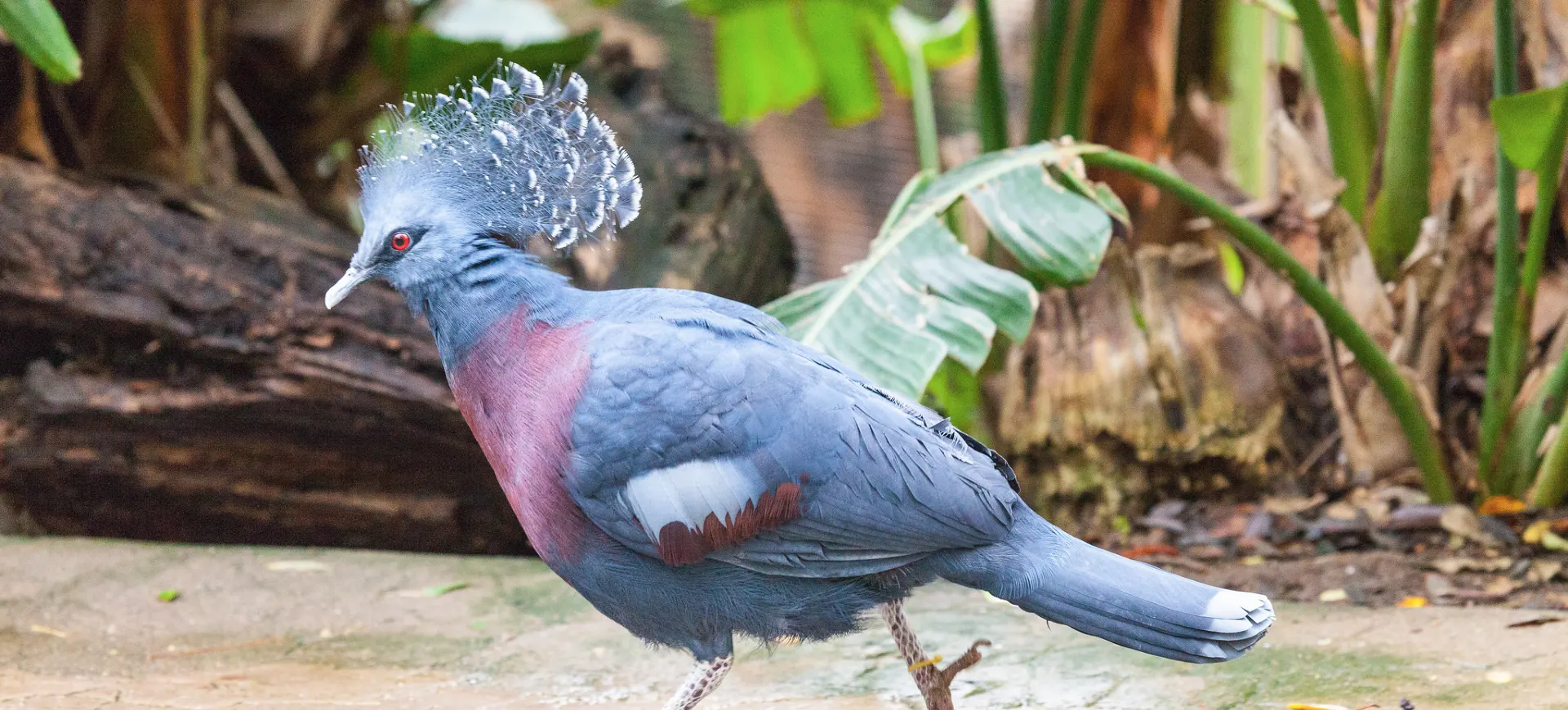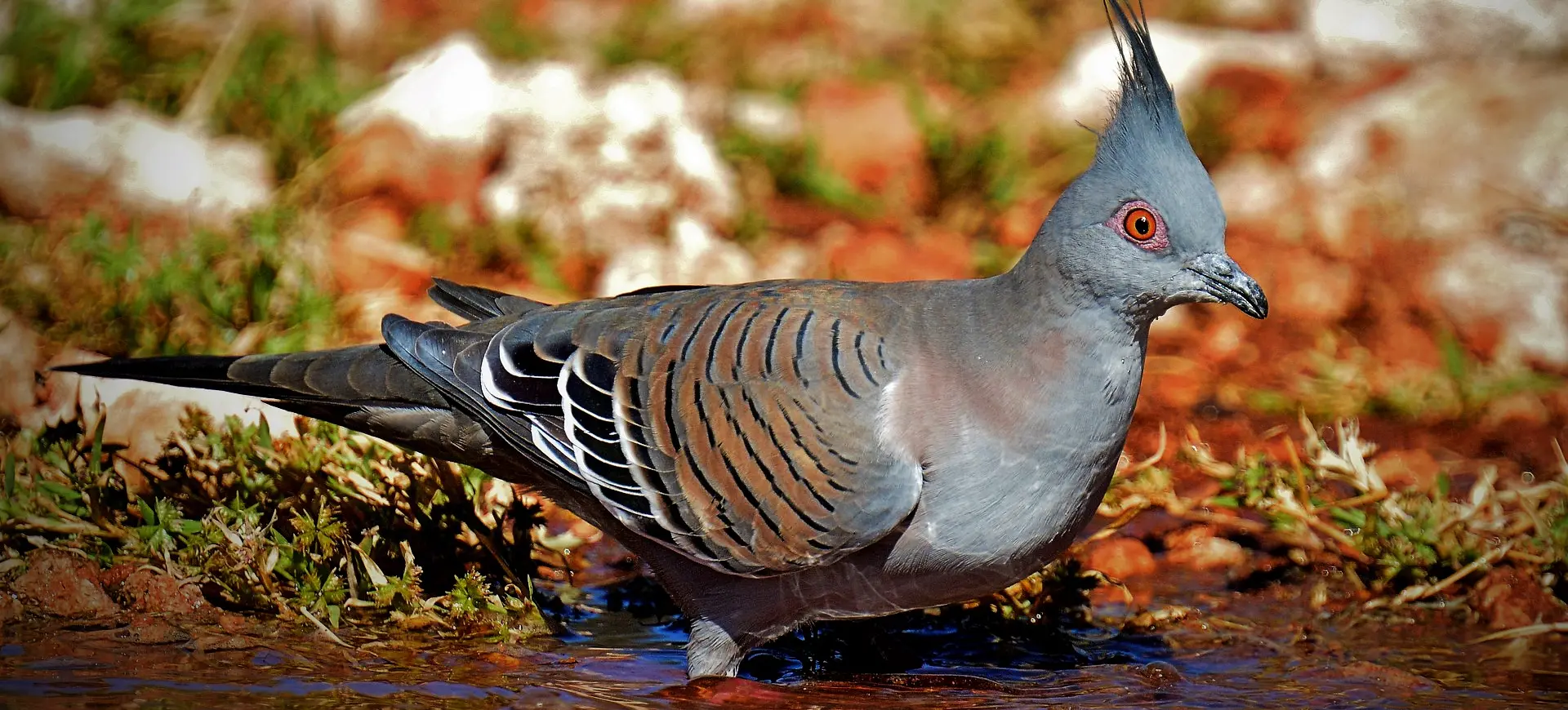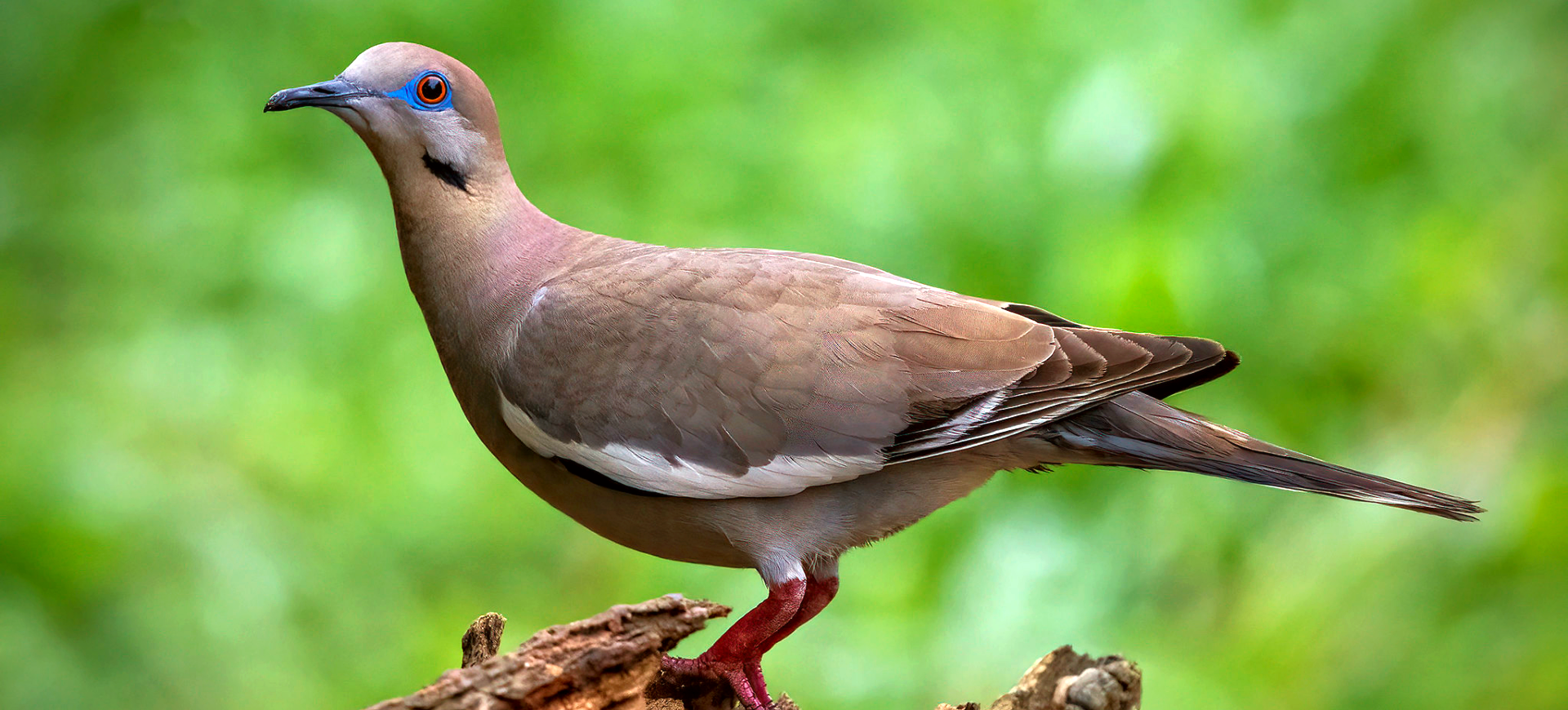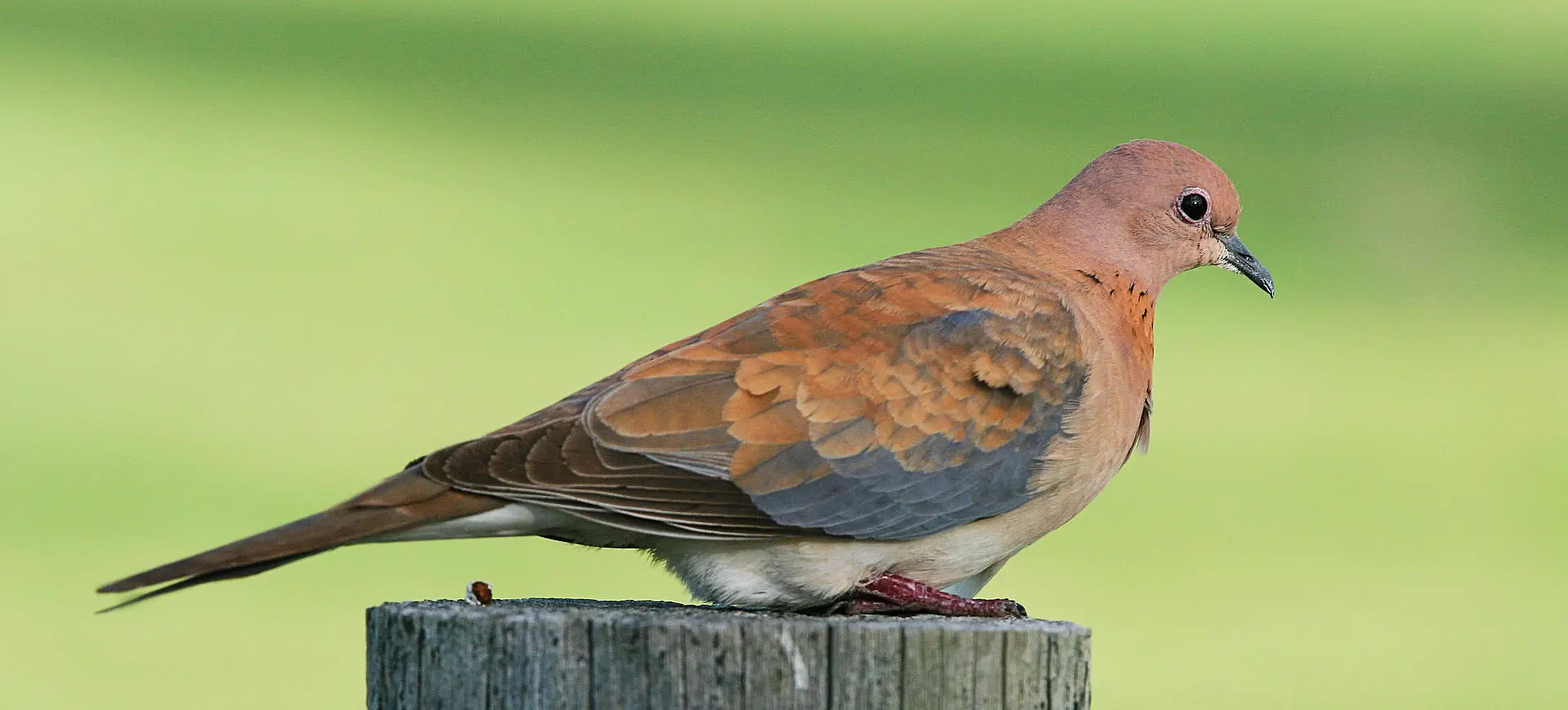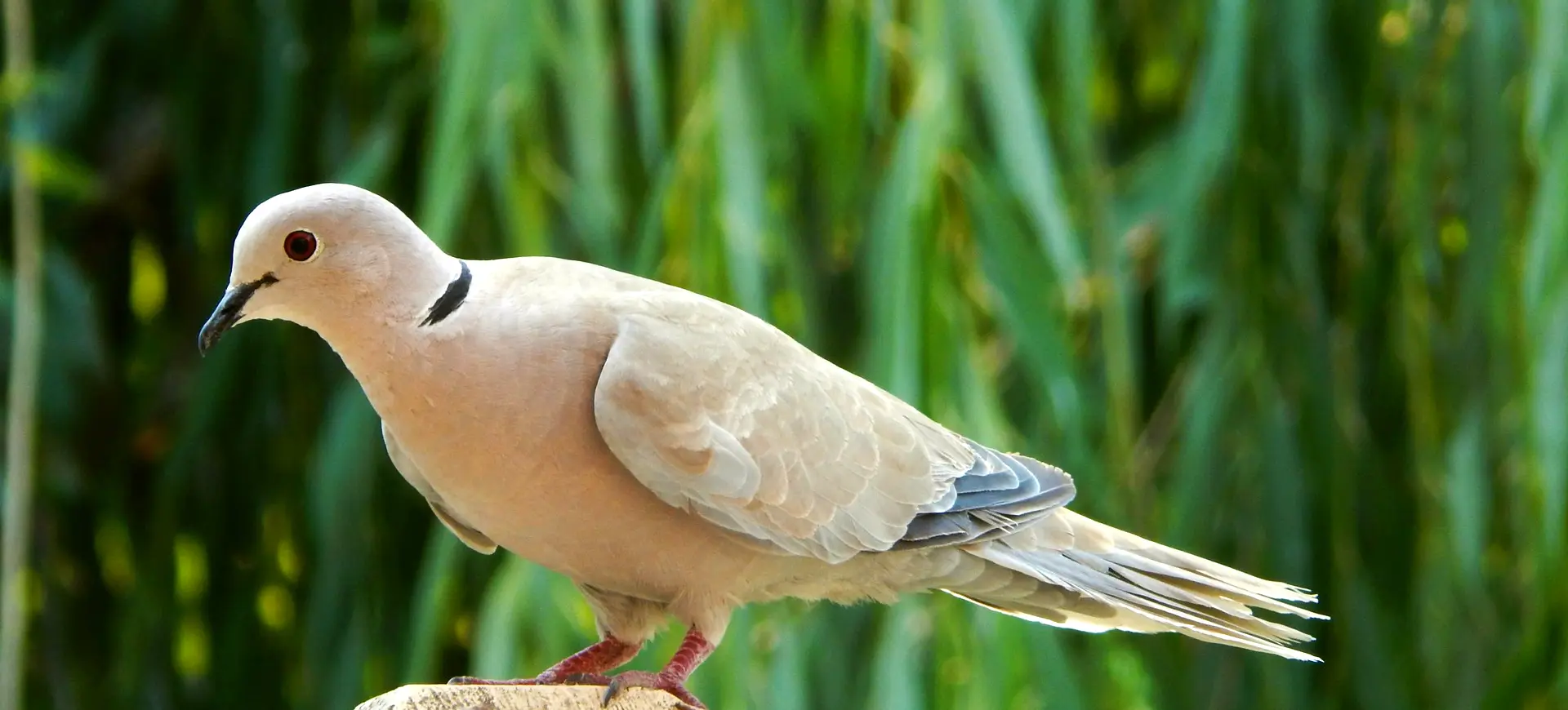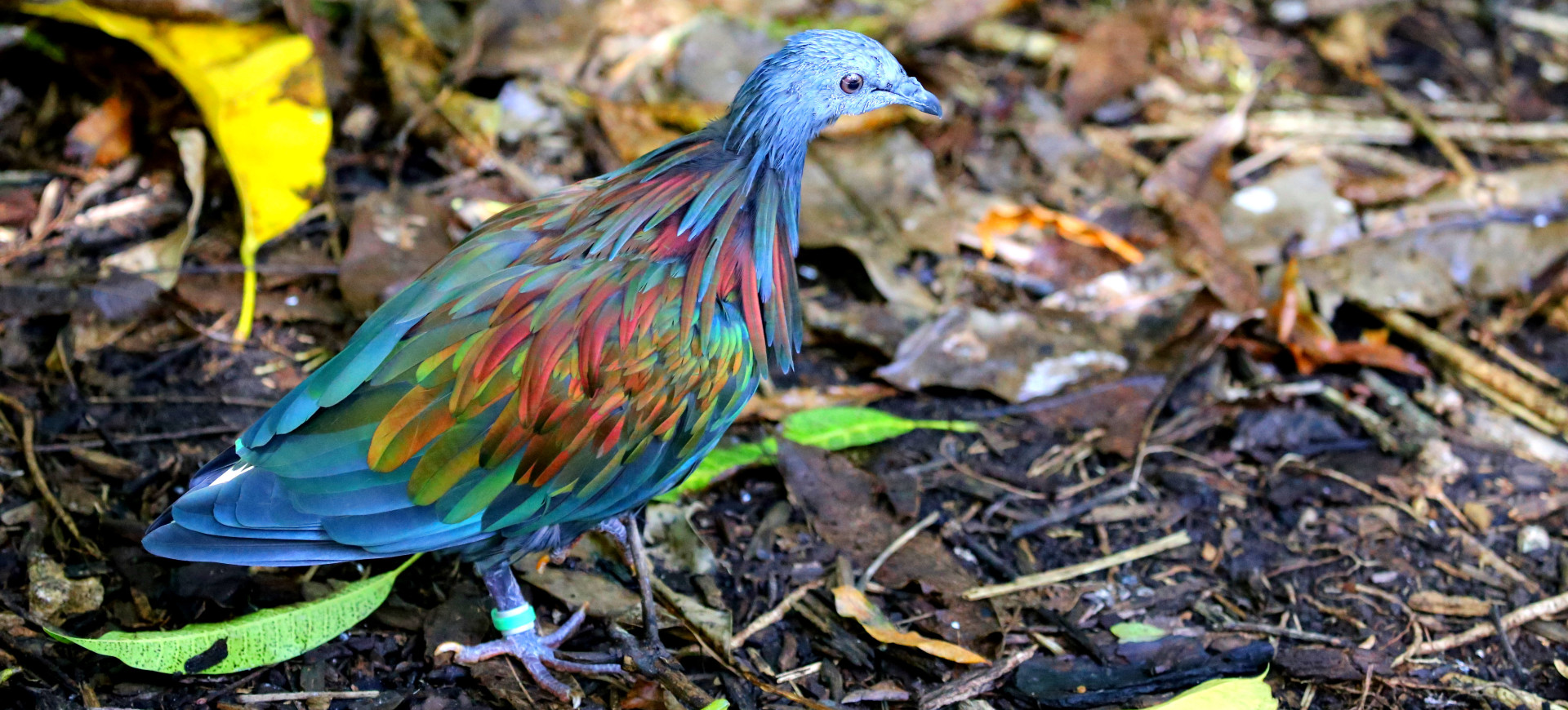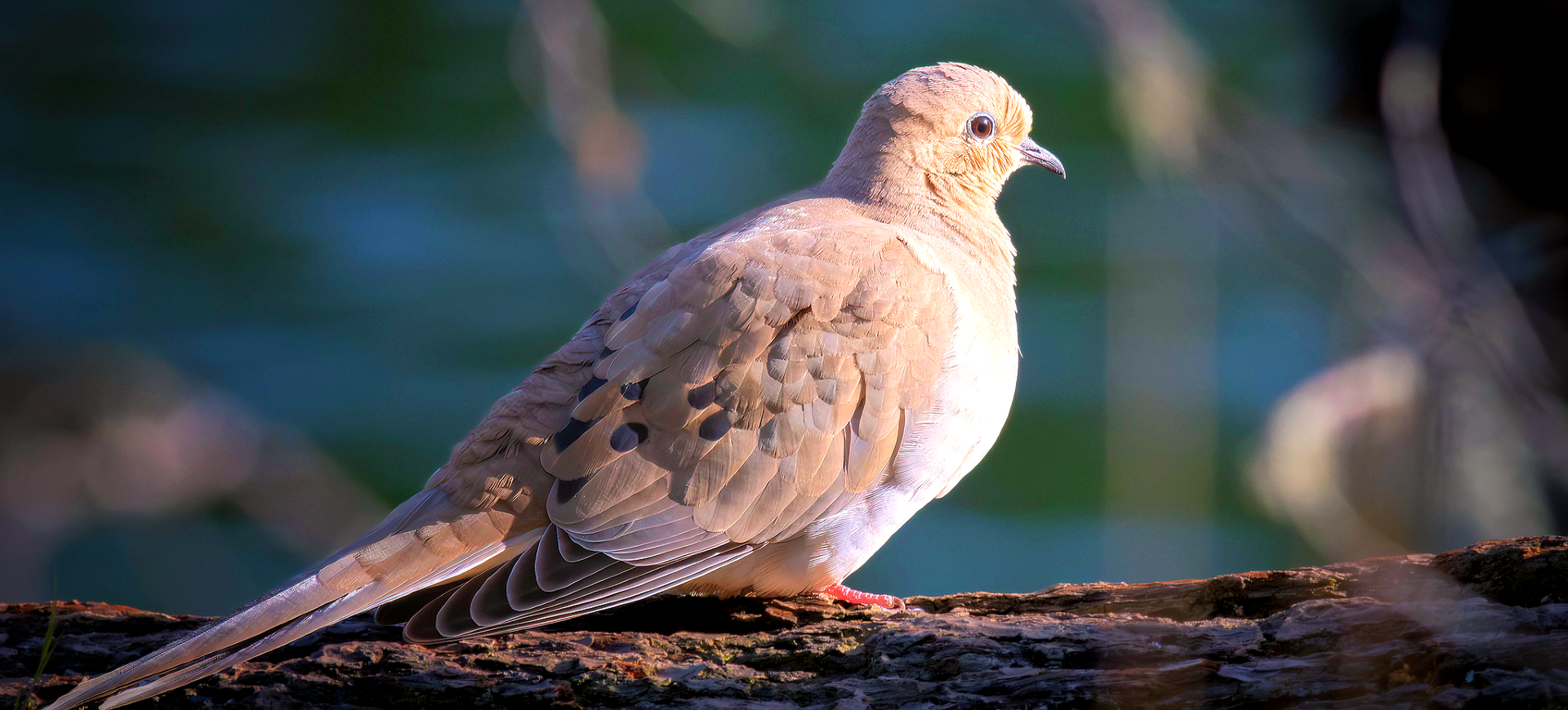Overview
The Crested Quail-dove is a large, ground-dwelling dove endemic to Jamaica. It inhabits montane forests with dense understory and is easily distinguished by its iridescent green and purple plumage, bold facial markings, and prominent crest of dark feathers atop its head. This elusive bird is known for its shy nature, typically remaining hidden in thick vegetation as it forages quietly for food. It is often detected by its deep, resonant cooing calls echoing through the forest understory.
The species plays an important role in seed dispersal, contributing to forest regeneration within its limited range. Despite being locally common in suitable habitats, it is highly sensitive to habitat fragmentation and human disturbance. The Crested Quail-dove is non-migratory and relies entirely on the remaining tracts of undisturbed forest in Jamaica’s central and eastern highlands. It is typically solitary or found in pairs, and rarely forms large flocks.
Its preferred habitats are mature wet limestone forests and montane rainforests at elevations ranging from 500 to 2,000 meters. It nests on or near the ground, which makes it particularly vulnerable to introduced predators such as mongooses and feral cats. This species is considered a forest specialist and is rarely found in altered or degraded habitats. Due to ongoing habitat loss and its restricted range, the Crested Quail-dove is categorized as Near Threatened by the IUCN.
Taxonomy
Kingdom
Phylum
Class
Order
Family
Genus
Species
Type
Current distribution:
The Crimped Quail-Dove is endemic to Jamaica and restricted to the island’s central and eastern highland regions. Its distribution includes the Blue Mountains and John Crow Mountains in the east and forested areas of the Cockpit Country in the west. It is considered locally common in protected or remote forested regions but has disappeared from many historically occupied lowland sites. Habitat fragmentation has led to increasingly isolated populations.
Population densities are highest in continuous tracts of undisturbed montane forest, especially in national parks and forest reserves. The species is difficult to detect due to its reclusive nature and preference for dense cover, often requiring acoustic surveys for monitoring. While protected areas offer critical refuges, unprotected forests face ongoing pressures from agriculture and development. Despite its small range, it remains fairly secure where intact forest habitat persists.
Physical Description:
The Crested Quail-dove is a robust bird with a striking combination of plumage colors, including a purplish-maroon breast, iridescent green wings, and a grayish-white belly. Its most distinctive feature is the dark, forward-curving crest on the crown of its head, which is often held erect. The face is marked with a bold white stripe below the eye and a dark line running through it, enhancing its unique appearance. Its bill is dark and relatively short, while the legs and feet are pinkish-red.
Sexual dimorphism is minimal, though males may be slightly larger and more vividly colored than females. Juveniles lack the iridescence and crest of adults, displaying duller, brownish plumage that provides camouflage on the forest floor. When disturbed, the bird may fly short distances with strong wingbeats before quickly returning to cover. Its plumage is well-adapted for blending into the dappled light of the forest underbrush.

Lifespan: Wild: ~5 Years || Captivity: Unknown

Weight: Male: 7.4–8.1 oz (210–230 g) || Female: 6.7–7.8 oz (190–220 g)

Length: Male: 11.0–12.6 in (28–32 cm) || Female: 10.6–12.2 in (27–31 cm)

Height: Male: 10.6–11.4 in (27–29 cm) || Female: 10.2–11.0 in (26–28 cm)

Wingspan: Male & Female: 18.0–20.0 in (46–51 cm)

Top Speed: 20 mph (32 km/h)
Characteristic:
Native Habitat:
The Crested Quail-dove inhabits humid, mature montane forests, particularly wet limestone and cloud forests with dense understory and thick leaf litter. It is typically found at elevations ranging from 500 to 2,000 meters, though it may descend lower in cooler forested valleys. Key characteristics of its preferred habitat include high canopy cover, abundant ground vegetation, and minimal human disturbance. It avoids open areas, secondary growth, and cultivated lands.
The species strongly prefers primary forest and is rarely encountered outside undisturbed ecosystems. Important habitat areas include the Blue Mountains, John Crow Mountains, and Cockpit Country, which offer high-elevation forest refuges. The presence of diverse native flora supports both its dietary and nesting requirements. These forests are essential not only for feeding but also for nesting sites and cover from predators.
Climate Zones:
Biomes:
WWF Biomes:
Biogeographical Realms:
Continents:
Countries:
Diet:
Diet & Feeding Habits:
The Crested Quail-dove is a terrestrial forager that primarily feeds on seeds, fallen fruits, and small invertebrates found on the forest floor. It uses its bill to pick up food from the leaf litter while walking slowly and deliberately through the underbrush. The diet includes seeds from native trees, berries, and occasionally insects and snails, especially during breeding. Foraging is usually solitary or in pairs, and the species is rarely observed feeding in open areas.
Because it depends on forest litter for foraging, habitat quality and forest floor integrity are critical to its dietary success. It prefers areas with dense vegetation and a thick leaf layer that harbor a variety of food sources. Feeding activity peaks in the early morning and late afternoon when temperatures are cooler and predation risk is reduced. Water intake is supplemented by dew and moisture-rich fruits.
Mating Behavior:
Mating Description:
Crested Quail-doves are monogamous and form strong pair bonds that often last for multiple breeding seasons. The breeding season coincides with the onset of the rainy period, when food availability increases and nesting conditions improve. Nests are typically shallow platforms of twigs constructed on the ground or slightly elevated in dense vegetation. The female usually lays one or two eggs, which both parents incubate.
Both male and female share incubation and chick-rearing responsibilities, with chicks being fed crop milk in the early days after hatching. Chicks are altricial and remain in the nest for several weeks before fledging. Predation rates and habitat quality influence nesting success, particularly ground cover density. The species is vulnerable to nest predation by introduced mammals such as rats and mongooses.
Reproduction Season:
Birth Type:
Pregnancy Duration:
Female Name:
Male Name:
Baby Name:
Social Structure Description:
The Crested Quail-dove is largely solitary outside the breeding season, although pairs may remain together throughout the year. During the breeding season, pairs maintain small territories and defend nesting areas from other doves. Social interactions are minimal, consisting mostly of vocalizations used for mate communication and territory defense. The species does not form flocks and is typically seen alone or in pairs.
Parental care is shared equally, with both males and females investing in incubation and feeding the young. Once fledged, juveniles may remain near the parents for a short period before dispersing. The bird’s cryptic behavior and quiet foraging habits reduce the need for complex social structures. Its social organization reflects its reclusive lifestyle and adaptation to densely vegetated forest environments.
Groups:
Conservation Status:
Population Trend:
The Crested Quail-dove has a small and declining population restricted entirely to the island of Jamaica. The species depends on intact montane forest, which continues declining in area and quality due to human activities. Remaining populations are fragmented, with strongholds in a few protected areas such as the Blue and John Crow Mountains National Park. Although local densities may be relatively high in pristine forests, the population remains low.
Limited range and specialized habitat preferences make the species vulnerable to environmental change—the bird’s secretive behavior and limited accessibility of its habitat challenge population monitoring. Acoustic monitoring has become an important tool for estimating population densities and tracking distribution changes. Long-term viability depends heavily on forest preservation and controlling invasive predators.
Population Threats:
Habitat destruction due to logging, agriculture, and infrastructure development poses the greatest threat to the Crested Quail-dove. Forest fragmentation reduces breeding success and increases exposure to predators and human disturbance. Invasive species such as the small Indian mongoose and rats prey on eggs and chicks, severely impacting reproductive success. Fire, both natural and anthropogenic, can also degrade critical habitat areas.
Climate change is a growing threat, potentially altering montane regions’ rainfall patterns and forest composition. Deforestation in the island’s central highlands may further isolate populations and reduce genetic diversity. Hunting pressure is low but may occur locally, especially in areas with reduced law enforcement. Conservation success is tied to effective management of Jamaica’s remaining forest ecosystems.
Conservation Efforts:
The species benefits from its presence in protected areas such as the Blue and John Crow Mountains National Park, which safeguards some of Jamaica’s most critical forest habitat. Conservation organizations have worked to raise awareness about the importance of endemic species and the preservation of highland forests. Ongoing habitat restoration projects aim to reconnect fragmented forests and improve ecological corridors. Research efforts have included surveys, acoustic monitoring, and ecological studies to better understand its needs.
Invasive species control, particularly for mongooses and rats, is critical to conservation strategies. Efforts to educate local communities and reduce forest degradation through sustainable practices are ongoing. Captive breeding is limited but has been initiated in select facilities to serve as an insurance population. Long-term conservation will depend on continued protection and restoration of primary forest areas and stricter land use regulations.
Additional Resources:
Fun Facts
- The Crested Quail-dove is one of Jamaica’s most visually distinctive endemic birds.
- Its haunting, low-pitched call is often the only indication of its presence in dense forest.
- The bird’s iridescent plumage changes color depending on the light angle.
- It has strong legs for walking long distances while foraging on the forest floor.
- Despite its name, it is more closely related to doves than true quail.
- It plays a critical ecological role in seed dispersal for native forest plants.
- The species is often called the “Mountain Witch” due to its elusive nature.
- Its preference for pristine forests makes it an indicator of ecosystem health.
- Conservation of this dove helps protect biodiversity hotspots in Jamaica.
- Its nestlings are fed crop milk, a nutrient-rich secretion both parents produce.

